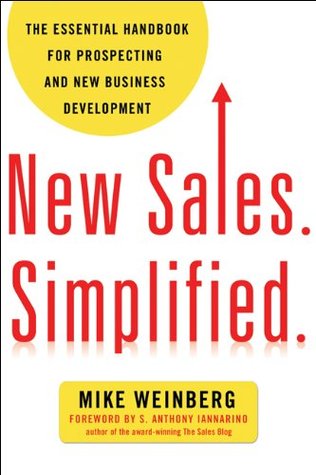More on this book
Community
Kindle Notes & Highlights
Read between
June 12 - June 12, 2019
most successful new business salespeople tend to be the most active salespeople.
“Who are we meeting with? Describe each person’s behavioral style. What is important to each person attending this sales call? Why do they think we are here today? What is going on in their business that I need to know about? What is your main objective today? What is a ‘win’ for us walking out of here? Tell me your plan for the call. How are you going to handle introducing our new offering? What role would you like me to play? Where are we vulnerable? What is our Achilles’ heel? Which competitors are involved here? Who is more entrenched?
a prospect will invite you to come in and make a presentation.
What type of discovery work have we done? To whom are we presenting, and what do we know about them? Why are we being asked to present?
Some of the possible dangers of prematurely delivering a proposal include not having identified the buyer’s criteria for making a decision, all the key players involved in the decision, and the true underlying issues driving the request for a proposal.
carve out time for proactive prospecting activity.
No one defaults to prospecting mode. No one.
SNAP Selling: Speed up Sales and Win More Business with Today’s Frazzled Customers)
an
what sounds like whining and excuses from an employee is often considered brilliant counsel when presented by an outsider.
I’m going to use hunting and fishing as metaphors to illustrate my point.
If we have so few good sales hunters and we’re falling short of our new business acquisition goals, why do we task the few hunters we have with so much account management work?
our top producer gets to spend maybe 25 percent of his time fishing.
I’m a fan of plans that decrease the commission payout on existing business over time and bonus the commission for new business that is closed.
Sales is as much about the heart as it about the head,
a framework for finding and closing new business.
THE NEW SALES DRIVER A. Select targets. B. Create and deploy weapons. C. Plan and execute the attack.
Who are our best customers? What are their common characteristics? What do their businesses “look, smell, and feel” like? Where are they located? Are they a particular size (e.g., in terms of revenue) or in certain vertical markets or niches where we have a higher rate of success? Where can we find potential customers with similar profiles?
Repeated calling on the same type of company allows us to become “experts” as we learn the language, nuances, and business issues facing similar prospects. We become more comfortable and more confident. We know which questions to ask and when. We build a reputation along with an arsenal of case studies to demonstrate our credibility and worth. And it becomes easier and easier to replicate early successes.
Find the path of least resistance and then focus like mad on that very path.
There are no prizes for salespeople who work really hard.
I encourage salespeople to pursue contacts higher up in the companies they target.
Nicer people. Smarter people. More professional people. Bigger-thinking people. People more interested in achieving their goals than beating up a vendor over a nickel.
they are very interested in solving business problems and improving results in the areas under their control.
What must be done to ensure your target list is finite, focused, written, and workable?
Bar none, the phone is still the most deadly and accurate weapon to score a face-to-face meeting with a target prospect.
Professional reps can significantly move the sales ball forward when they become proficient at asking pain-seeking, opportunity-uncovering, probing questions.
Case Studies. The proof is in the pudding.
rehearse their roles. Team Selling. Top-performing hunters must become masters at using all available resources to win business.
use other subject matter experts (SMEs) from your company.
When planned and executed properly, a killer presentation can be the difference maker that truly sets you apart from the competition.
Since the proposal is one of the final weapons we would fire at a target account, and since it’s the one they can say “yes” to, it is certainly worth the effort to hone our proposal-writing skills.
no one cares how smart you are or how great you think your company is. They want to know what’s in it for them. No one argues this point.
What can you tell me about (insert your company name here)?
Stop talking about yourself and your company and begin leading with the issues, pains, problems, opportunities, and results that are important to your prospect.
help the customer win. When you speak the account’s language and frame the sales story around what is most meaningful to the client, you stand out
packaging matters. The sales story is the “gift wrap” on our offering. It’s the curb appeal of the house, the plating of an exquisite meal at a fine restaurant. It’s the verbal explanation of our brand, the value we create, the experience we deliver. We should be enhancing, not diminishing, the perceived value of what we sell.
Saying what everyone else is saying won’t entice a dream prospect to give us an hour on an already-packed calendar.
A premium price requires a premium story.
Our job requires connecting with people; building trust; capturing attention; and demonstrating passion, enthusiasm, and pride.
What a difference it makes when our hearts are fully engaged, because we’re as proud as can be of the company we represent.
The customer was always the main character and centerpiece of their sales pitch.
Our Story Must Pass the “So What?” Test
Breaking into a prospect’s world is only going to happen when we talk about something that matters to them.


